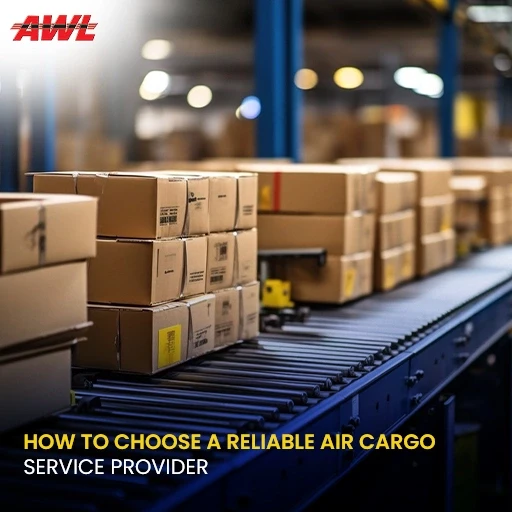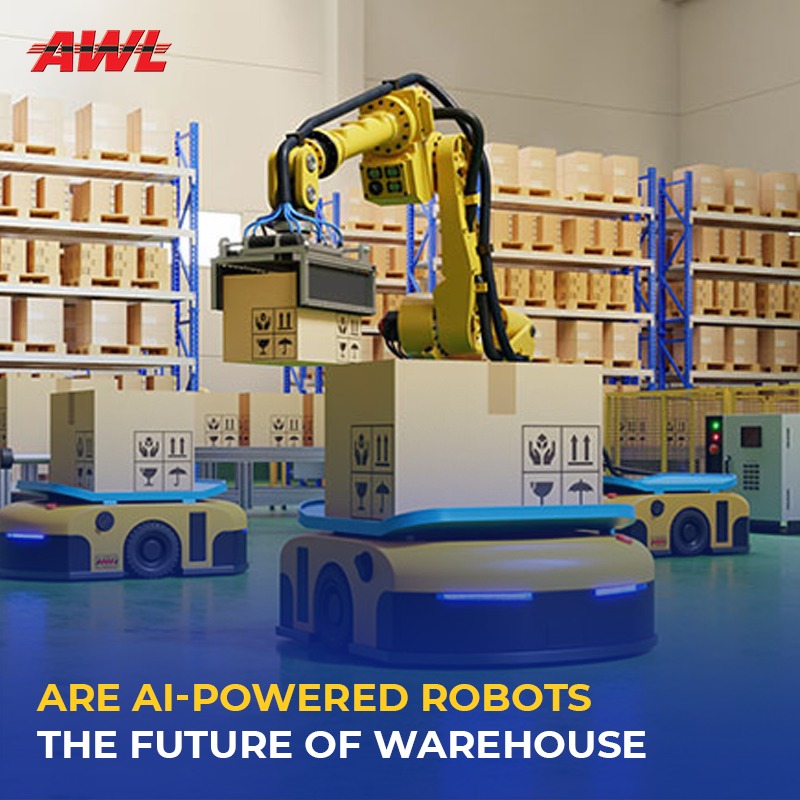
15-Sep-2022

Earlier there were times when warehouses were completely powered by human resources. But in today’s time there is hardly any space left for warehouse labour. From stocking goods in the warehouse to picking and packing items for final delivery, automation today is now capable of taking control of the whole warehouse process. Moreover, warehouses today use automation, robots, and special softwares to transport materials from one point to another, perform various dedicated tasks, and streamline the warehouse process. Over the recent years, robotics have now become a popular practice in the warehouse industry. Different types of robots are now being used to make the whole supply chain process more efficient, also reducing human errors from the process at the same time. Every day there are new advances in the already existing warehouse technology.
Even the big companies like Google and Amazon have also tried robotics in their warehouses. Google tried robot arms in their warehouses to pick up things while Amazon on the other hand, annually challenges startups to rack their shelves using robots hoping that it will someday find a machine that is good enough to operate in their warehouses. In general, using robotics can solve your various problems and can also enable you to numerous advantages. The warehouse industry today is advancing in such a way that it can be difficult at times to find human workers but can get all the robots that you need.
Modern day warehousing is becoming more and more competitive with the advancements in technology, which is forcing the companies today to think about introducing robots in their already existing warehouses. Robots are ready to become an integral part of the warehouse industry by increasing the productivity, accuracy and efficiency of the warehouse. However, in order to be able to get the best ROI possible, it is important to first understand the types of robots that are present in the market today. Some of the common types of warehouse robots are as follows:
AGV or automated guided vehicles are machines that help to transport goods within the warehouse premises. These are the best machines that can help in replacing manually driven forklift vehicles or pickup carts. In addition to this, there are AGV vehicles present in the market that can autonomously navigate the warehouse facilities by following the marked routes. These routes can be marked with the help of wires, magnetic strips or even sensors that can be embedded in the floor or other guiding methods. Moreover, there are other AGVs that have cameras, infrared and other advanced technology which helps in navigating routes, identifying objects and avoiding collisions.
Robotic arms are basically the pick and place robot machines. An interconnected bending multi-joint limb is used to handle products within the warehouses as well as distribution centres. These arms can easily move, lift, turn and operate items therefore, they can be used in picking and packing items, receiving and storing goods, inventory management and a lot of other functions.
Computer-controlled systems that assist in automating inventory management and are also able to store and retrieve goods on demand. Designed to facilitate quick pickup and manage inventory, these systems are paired with the warehouse software. These systems operate on certain paths as cranes or pickup machines to transfer and store goods to and from aisles and vertically high spots. The sole purpose of using AS and RS systems is to speed up the order fulfillment process.
The semi-autonomous robots that are also known as Cobots are designed to perform various tasks in the warehouse with the help of human workers. There are different kinds of collaborative robots that help human workers. Some of them act as movable storage containers and follow the warehouse pickers around the warehouse. Others are used to transport goods with warehouse workflows. These robots are sensor enabled so they are easily able to distinguish between obstacles and boxes, which enables them to carry out accurate navigation throughout the warehouse facility. This in turn speeds up the whole fulfillment process by delivering orders to workers in packing stations.
This technology is similar to that of the AS and RS system. The goods to person system helps the warehouse delivery workers by automating the storage system and by delivering goods to designated stationary pickup stations where human workers will then fulfil the order. Although, this technology has the highest potential to return the maximum return on investment, there are some infrastructural improvements that should be made over time in order to maximise its potential.
“Global Warehouse Robotics market is expected to grow at a Compound Annual Growth Rate of 11% and Reach 6.46 Billion US Dollars by the end of 2025.”
There are numerous benefits of using warehouse robotics that helps the companies in improving their order fulfilment process and also enables them to manage inventory more efficiently. Along with this, it also helps businesses to lower their operating expenses, which were earlier being spent on transporting items in the warehouse. It also helps the warehouse workers to concentrate on more complex tasks and enables the business to stay ahead of the market competition. Lowering costs and increased efficiency are not the only benefits of deploying robots in your warehouse. Some of the additional benefits are as follows:
Investing in warehouse robotics increases the overall productivity and accuracy of the warehouse. Warehouse robotics lowers the scope for human errors to a minimum and increases customer satisfaction at the same time. These robots can help with the handling, picking and sorting of goods which increase the accuracy and order fulfilment levels of the warehouse.
The traditional time consuming, stressful and dangerous warehousing process can now be easily replaced with warehouse automation. Operations such as transporting inventory and retrieving inventory from heights can be safely executed now with the help of robots. By doing so, warehouse robots are able to reduce physical and mental pressure on human workers. This in turn helps in increasing the overall morale and boosting productivity among the employees which eventually leads to a better working environment.
By doing monotonous tasks, the warehouse workers tend to be less efficient over time. Therefore, using robots to efficiently execute orders and perform monotonous tasks can help human workers to focus their time and energy on more complex and complicated tasks that require fine skills and critical thinking.
Warehouse robotics have the ability to perform tasks that are challenging to human workers. However, there are certain areas where robots can be used to improve the warehouse work performance. Some such areas include:
Picking is the most common warehouse operation performed by warehouse workers and it is also considered the most risky operation in the warehouse operations as it involves moving goods around the warehouse aisles and to deliver the items that are to be delivered, to their respective delivery points. Order picking robots can reduce the processing times and the costs that are linked with them by reducing the transportation time through the warehouse.
The process of sorting goods might appear simple for humans and more complex to robots but using the right technology and robots can make it easy to automate the sorting process. Warehouse sorting robots are usually equipped with conveyors, arms, cameras, sensors, and algorithms. Also, using RFID tags with such robots can enable them to correctly identify, sort and store items at their respective storage areas. Moreover, the integrated AI sorting systems can also assist the human workers to accurately sort items into their storage areas.
Automated systems can easily pack items much more efficiently and quickly than human workers. Automated systems such as cartonization software’s and bagging machines can easily measure the products weight and dimensions while transporting them to calculate the ideal carton size for orders and even direct associates to perform accurate packaging.
Transporting items from one place to another within the warehouse requires physical strength and a lot of time. Robots can help in reducing human efforts and time at the same time. Robotic transportation such as monorail, conveyor belt, and AGVs can help to transport goods much more quickly and by reducing human efforts and the stress that is associated with it.
Warehouse robotics are even capable of automating the replenishment workflows, which reduces the chances of stock outs and backorders through automated re-ordering. Robots can easily monitor inventory levels and send out alerts when inventory counts drop below the determined stock keeping units in the warehouse. Along with that, robots such as the AGV can assist workers in the replenishment process on the arrival of new inventory.
Overall robots are successful in adding significant value to warehouse operations. Warehouse robotics help in mitigating errors and also speeds up the order fulfillment process at the same time. Moreover, companies like AWL India can assist you, if you are looking to automate your existing warehousing structure. AWL India has been in the business since 2007 and was a major player in resolving the major oxygen crisis that took place within the country during the second wave of COVID-19. Apart from that AWL India has introduced WAAS or Warehousing as a solution where they can assist you with all your warehouse automation needs. In general, applying robotics in the warehouse workspace reduces the running and overhead costs and also ensures better inventory management. The importance of warehouse robotics is increasing every day and companies are forced to think about introducing robots into their already existing warehouse operations.
Also Read: Warehousing Facilities in India
Also Read: The Importance of Warehousing Services in a Logistics System